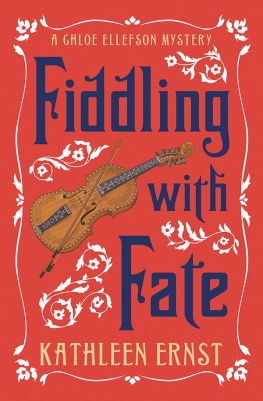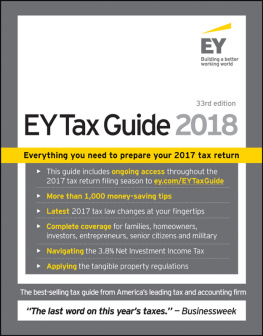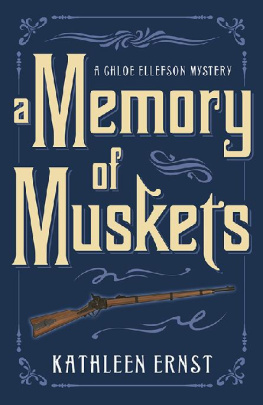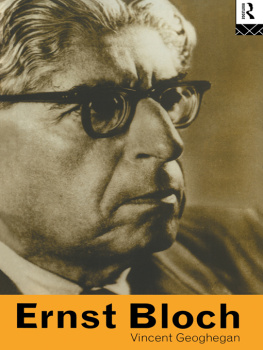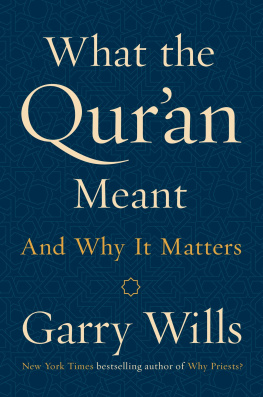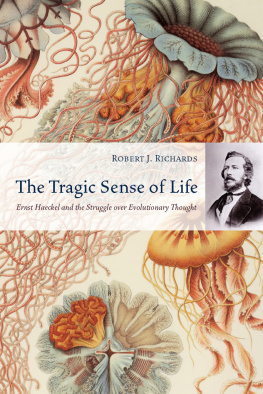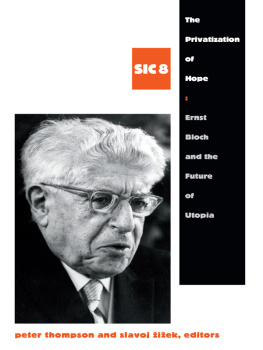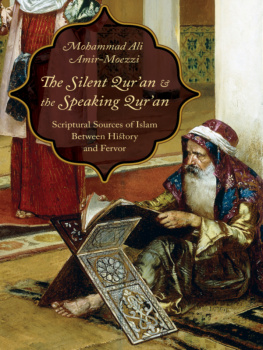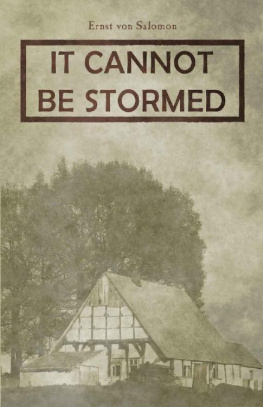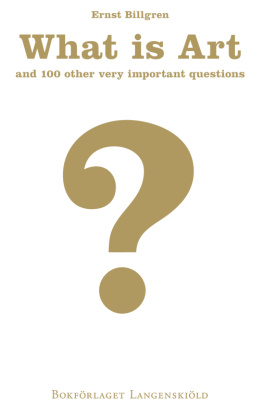Ernst - How to read the Qurʼan: a new guide, with select translations
Here you can read online Ernst - How to read the Qurʼan: a new guide, with select translations full text of the book (entire story) in english for free. Download pdf and epub, get meaning, cover and reviews about this ebook. City: Chapel Hill, year: 2011, publisher: The University of North Carolina Press, genre: Religion. Description of the work, (preface) as well as reviews are available. Best literature library LitArk.com created for fans of good reading and offers a wide selection of genres:
Romance novel
Science fiction
Adventure
Detective
Science
History
Home and family
Prose
Art
Politics
Computer
Non-fiction
Religion
Business
Children
Humor
Choose a favorite category and find really read worthwhile books. Enjoy immersion in the world of imagination, feel the emotions of the characters or learn something new for yourself, make an fascinating discovery.

How to read the Qurʼan: a new guide, with select translations: summary, description and annotation
We offer to read an annotation, description, summary or preface (depends on what the author of the book "How to read the Qurʼan: a new guide, with select translations" wrote himself). If you haven't found the necessary information about the book — write in the comments, we will try to find it.
Ernst: author's other books
Who wrote How to read the Qurʼan: a new guide, with select translations? Find out the surname, the name of the author of the book and a list of all author's works by series.
How to read the Qurʼan: a new guide, with select translations — read online for free the complete book (whole text) full work
Below is the text of the book, divided by pages. System saving the place of the last page read, allows you to conveniently read the book "How to read the Qurʼan: a new guide, with select translations" online for free, without having to search again every time where you left off. Put a bookmark, and you can go to the page where you finished reading at any time.
Font size:
Interval:
Bookmark:
How to Read the Quran
This book was published with the assistance of the
William R. Kenan Jr. Fund of the University of North Carolina Press
2011 Carl W. Ernst
All rights reserved
Manufactured in the United States of America
Set in Iowan Old Style
by Tseng Information Systems, Inc.
The paper in this book meets the guidelines for
permanence and durability of the Committee on
Production Guidelines for Book Longevity of the
Council on Library Resources.
The University of North Carolina Press has been a member of the Green Press Initiative since 2003.
Library of Congress Cataloging-in-Publication Data
Ernst, Carl W., 1950
How to read the Quran : a new guide, with select translations / Carl W. Ernst.
p. cm.
This book was published with the assistance of the
William R. Kenan Jr. Fund of the University of North Carolina Press.
Includes bibliographical references and index.
ISBN 978-0-8078-3516-6 (cloth : alk. paper)
1. KoranIntroductions. 2. KoranReading. 3. KoranCriticism,
interpretation, etc. 4. Koran as literature. I. Title.
BP130.E76 2011
297.12261dc23 2011020424
15 14 13 12 11 5 4 3 2 1
Introduction
The Problem of Reading the Quran
Chapter One
The History and Form of the Quran and the Practices of Reading
Chapter Two
Early Meccan Suras
Chapter Three
Middle and Later Meccan Suras
Chapter Four
Medinan Suras
Conclusion
Toward a Literary Reading of the Quran
Appendix A
Reading the Structure of the Meccan Suras
Appendix B
Ring Structure in Sura 2 and Sura 5
Appendix C
Suggested Interpretive Exercises
1.1 Page from early Quran, ca. 900
1.2 Quran leaf with interlinear Persian translation
2.1 Twin Nabatean tombs at Madain Salih
2.2 Nabatean monument at Petra
3.1 The Seven Sleepers, from the Jami al-tawarikh of Rashid al-Din
3.2 Hellenistic coin representing Alexander with rams horn
3.3 Miniature painting of Alexanders wall, from a Khamsa of Nizami
4.1 Mary in the Temple, Kariye Camii, Istanbul
1.1 Numbers, Names, and Initial Letters of Suras of the Quran with Numbering in Chronologies of Nldeke and the Egyptian Edition
1.2 Nldekes Quranic Chronology in Canonical Order
A book like this cannot come about without the support of many talented people and generous institutions, and it is a pleasure to take the opportunity here to express my thanks for that support.
The idea of a literary introduction to the Quran started some years ago with a suggestion by Rick Todhunter. I sharpened the concept of a chronological reading of the Quran in a course taught over several years, with stimulating feedback from my students at the University of North Carolina at Chapel Hill. Among my research assistants, Aya Okawa contributed brilliant charts of Quranic chronology, and Brannon Ingram worked ably to obtain permission for illustrations. Several colleagues and graduate students provided astute criticisms of earlier drafts; many thanks to Bruce B. Lawrence of Duke University, Peter Wright of Colorado College (whose UNC dissertation opened a stimulating window on the rhetoric of the Quran), Timur Yuskaev of Hartford Seminary, and Tehsin Thaver of UNC for their helpful comments. Zafar Ishaq Ansari of the International Islamic University (Islamabad) made important critical observations at an early stage. Azizan Baharuddin of the University of Malaya and her colleagues gave a generous reception to materials from chapter 4. Two anonymous readers for UNC Press made helpful suggestions for improving the argument. I appreciate all these readers comments, and if I have not always followed them, any defects in this presentation are entirely my own responsibility.
My editor at UNC Press, Elaine Maisner, has been incredibly patient and supportive of this project. Thanks to her and all the hard-working staff at the press, who set the standard for quality academic publishing. I would also like to thank Raymond Farrin of the American University of Kuwait for kindly sharing with me the proofs of his forthcoming study of early Arabic literature, Abundance from the Desert. Christiane Gruber of Indiana University generously shared her expert knowledge of suitable illustrations.
A special debt of gratitude goes to artist Ahmed Moustafa, who graciously gave permission for an expanded image of his superb painting, God Is the Light of the Heavens and the Earth, to appear on the cover of the book. The title translates the opening words of the famous Light Verse of the Quran (24:35), the complete text of which is presented eight times in the rectangular bands of the original image (four times in a clockwise, and four times in a counterclockwise direction). This is overlaid on a repeating geometric grid containing the first words of the Throne Verse (Quran 2:255), God! There is no god but He, the Living, the Everlasting. The color palette of this remarkable composition shifts from earth hues below to sky blue above, and the illuminated clouds in the center convey an unmistakable sense of going through the text to what lies beyonda marvelous image to suggest engagement with the text of the Quran.
On a personal note, I would like to salute my first cousin once removed, Emeritus Professor L. Carl Brown of Princeton University, the senior Arabist in the family, who for many years has set an admirable example of scholarship and teaching. As always, I owe more than I can say to my wife, Judith Ernst.
Portions of the research for this book were supported by a residency at the Doris Duke Foundation for Islamic Art, a fellowship from the John Simon Guggenheim Memorial Foundation, and a fellowship from the Mellon-supported Program in Medieval and Early Modern Studies at UNC. I also gratefully acknowledge the support of the William R. Kenan Jr. Charitable Trust and the UNC College of Arts and Sciences.
Finally, this book is dedicated to the memory of Dr. Nasr Hamid Abu Zayd (19432010), a gifted scholar and pioneer in the literary study of the Quran.
How to Read the Quran
The Problem of Reading the Quran
The genesis of this book comes from a simple question: how should non-Muslims read the Quran? On one level, this would seem to be a relatively straightforward issue. The Quran is a sacred text, comparable to the Bible and the scriptures of other religious traditions, which are often read and studied in academic and literary contexts. From that point of view, the questions might seem to be primarily technicalhow is the text organized, what are its primary features, and what is its audience and principal interpretive traditions? Surely the Quran should be approached like any other text.
But with the Quran the situation is different. The Quran is the source of enormous anxiety in Europe and America, for both religious conservatives, who are alarmed about a competitive postbiblical revelation, and secularists, who view Islam with deep suspicion as an irrational force in the post-Enlightenment world. Neither of those worldviews takes the Quran very seriously as a text; according to these views, it is instead a very dangerous problem. It is even the case that a number of attempts have been made to outlaw the sale and distribution of the Quran completely, as a text that promotes violence, an argument made by fundamentalist Hindus in India during the 1980s and more recently by a right-wing anti-immigration party in the Netherlands. In 2002, outside religious groups sued the University of North Carolina at Chapel Hill for violating the freedom of religion, when (at my suggestion) it assigned a translation of selections from the Quran as its summer reading program for all incoming students that year.an obscure Christian pastor in Florida drew worldwide attention when he threatened to burn copies of the Quran, claiming that it was the cause of the terrorist attacks against American targets in September 2001. These are only a few manifestations of contemporary nervousness about reading the Quran. I would argue that such an attitude of suspicion is hardly conducive to a fair-minded understanding of the text.
Font size:
Interval:
Bookmark:
Similar books «How to read the Qurʼan: a new guide, with select translations»
Look at similar books to How to read the Qurʼan: a new guide, with select translations. We have selected literature similar in name and meaning in the hope of providing readers with more options to find new, interesting, not yet read works.
Discussion, reviews of the book How to read the Qurʼan: a new guide, with select translations and just readers' own opinions. Leave your comments, write what you think about the work, its meaning or the main characters. Specify what exactly you liked and what you didn't like, and why you think so.


